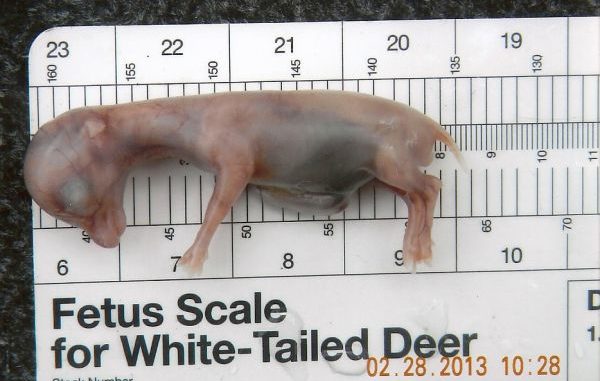
Determining breeding dates is a matter of normal biological activity for a deer biologist.
A fetus scale developed by South Carolina deer biologists — including Quality Deer Management Association founder Joe Hamilton, the founder — is used in determining the dates.
The South Carolina study established age data for deer embryos and fetuses for deer in the Southeast United States.
The photograph shows a single fetus that has been placed on the scale. The second row of numbers from the bottom of the scale is the age of the fetus in days. In this case, the base of the tail is in line with the 62nd day, thus the fetus is 62 days old and was bred 62 days prior to the harvest date of this doe.
If this doe was killed on Jan. 30, one would backdate 62 days to Nov. 30 (the fetus was one day old on Nov. 30); thus, the doe was bred on Nov. 29.
In the early breeding regions of Louisiana, hunters harvesting does in late December and January will probably find embryos and fetuses — and could collect these and determine the breeding dates for their deer herd.
However, I would suggest getting with an LDWF biologist prior to doing this so you collect the desired body parts. LDWF collects this information every year, so your information can be added to the data that has been collected over the years to enhance the known breeding range for the specific deer herd.
Hunters in those regions of the state with late breeding can also collect reproductive tracts, but few if any embryos or fetuses should be found. Examination of the deer ovaries will provide information about the dates that does cycled, and this adds to the breeding data.


